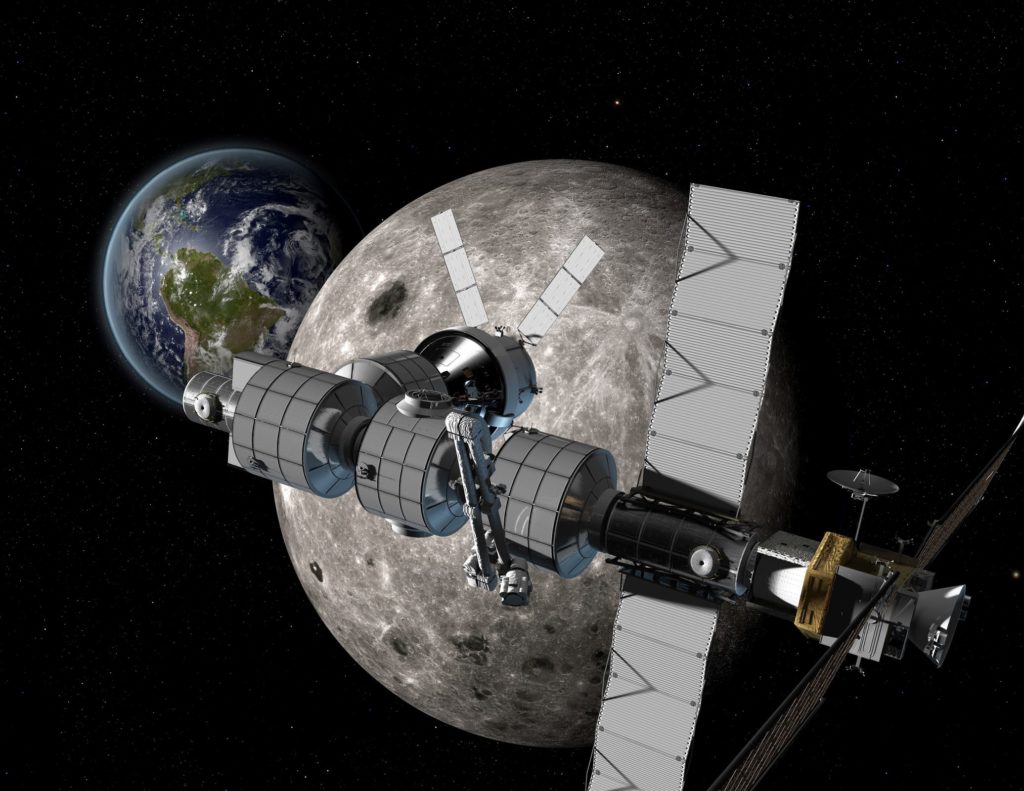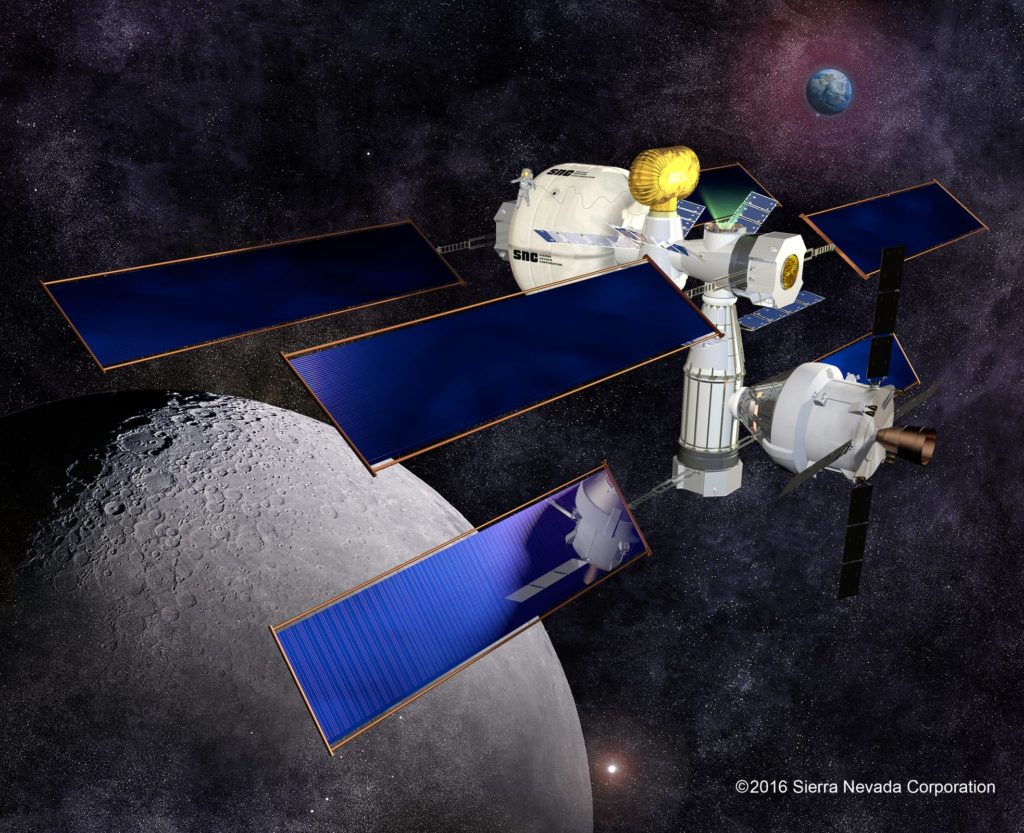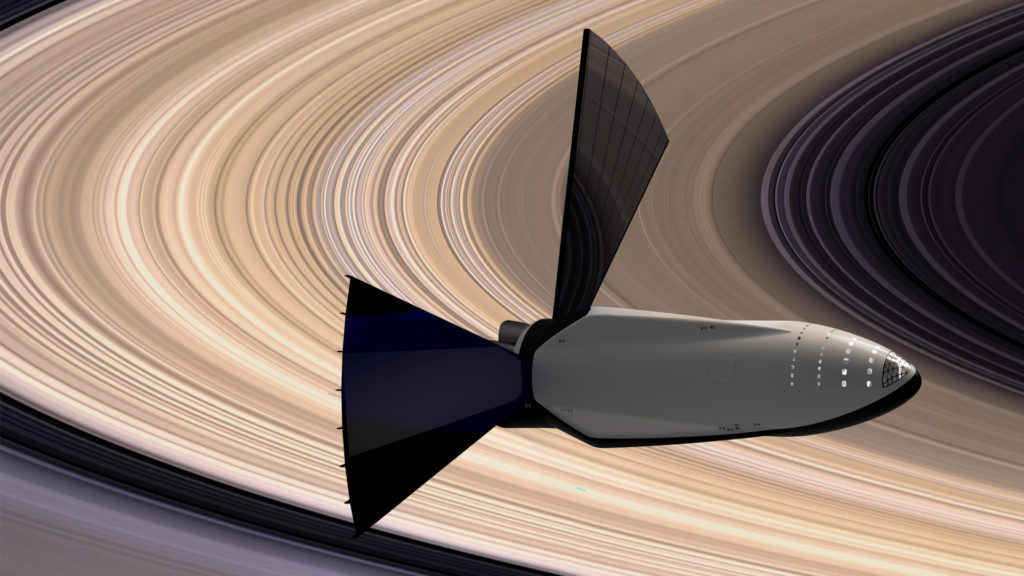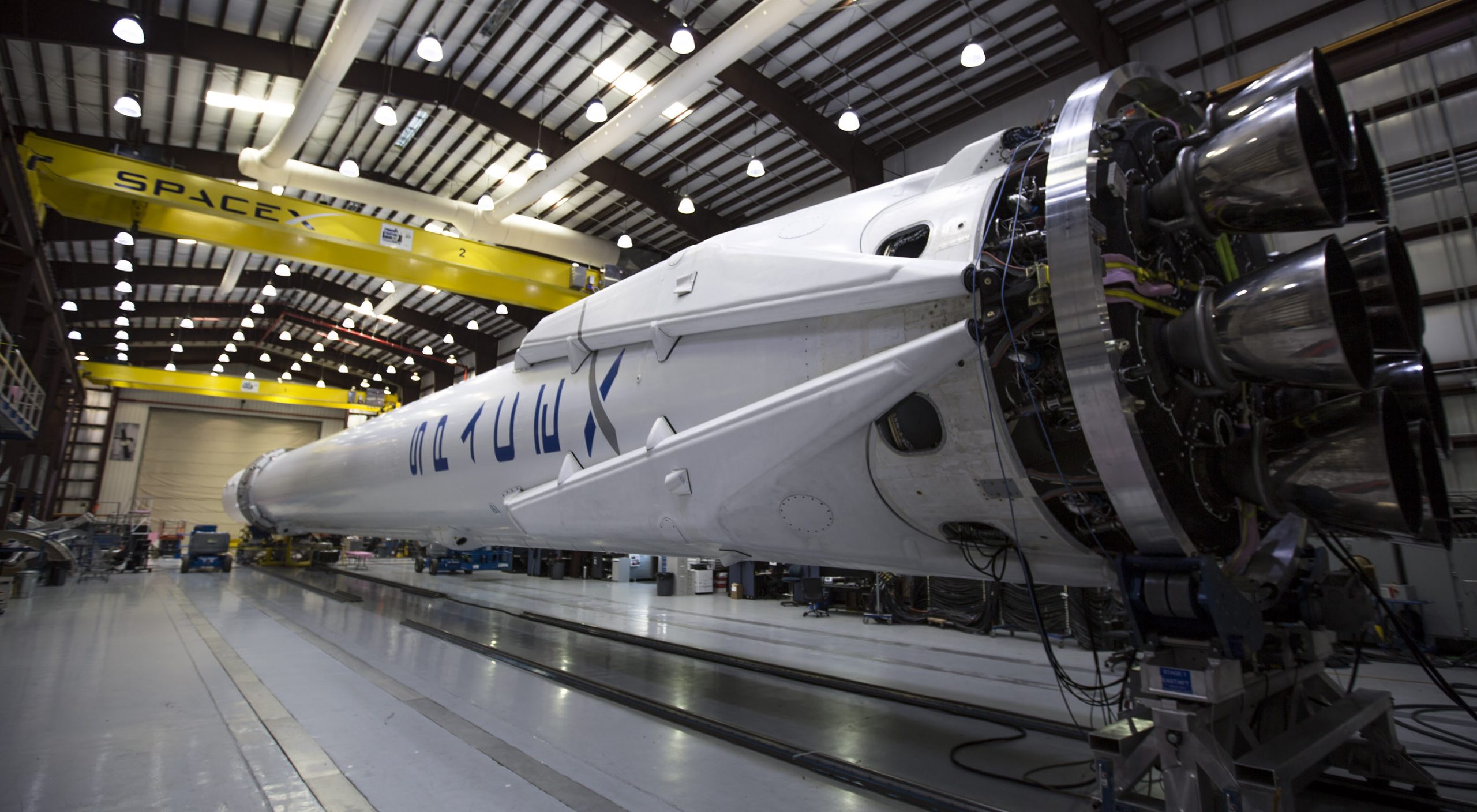
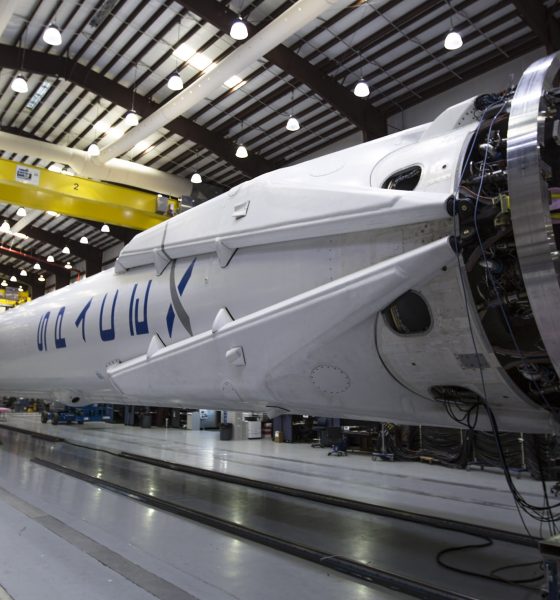
News
SpaceX lobbies NASA to foster competitive deep space exploration
Tim Hughes, the senior VP of SpaceX’s global business and government affairs, testified earlier this morning before the Senate Subcommittee on Space, Science, and Technology and the Committee on Commerce, Science, and Technology. He put forth a strong argument that it would be in the best interests of both NASA and the United States to encourage commercial competition in pursuit of the exploration of deep space, and that this could be done with concrete goals like improved interplanetary communications, vertically landing spacecraft on the Moon, and sending substantial amounts of cargo to Mars.
Before joining SpaceX, Hughes was the central actor responsible for drafting and supporting the Commercial Space Launch Amendments Act of 2004, which effectively paved the way for NASA’s first programs of commercial competition just two years later. He joined the company in 2005, and has defined SpaceX’s approach to legal and government affairs in the many years since.
Leveraging data related to the major successes and efficiency of NASA’s Commercial Orbital Transport Services (COTS) initiative, which began in earnest in 2006, Hughes demonstrated that by awarding SpaceX with funds from COTS, NASA ultimately found themselves with a highly-capable orbital launch vehicle after a relatively miniscule investment of $396 million into the venture. A study later conducted by NASA estimated that developing the same vehicle with a traditional NASA or commercial approach would have cost approximately $4 billion or $1.7 billion respectively, implying that the COTS approach was as much as ten times more efficient than NASA’s own traditional strategies of launch vehicle procurement.
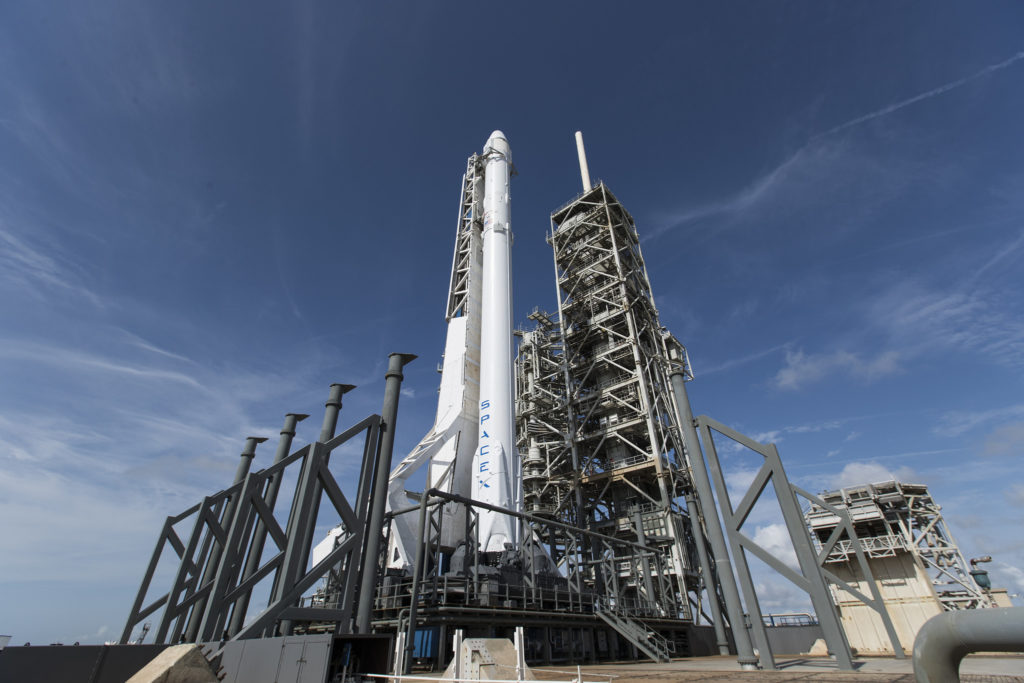
SpaceX’s CRS-11 mission just over a month ago was the company’s 10th successful transport of cargo to the ISS. (SpaceX)
Of course, SpaceX themselves invested over $500 million initially following NASA’s COTS award, but NASA’s bode of confidence in the company likely made it possible in the first place for it to raise that level of funding. The point of this presented data, of course, is to segue into the argument that the introduction of commercial competition into the field of deep space exploration could also benefit NASA in the sense that it might be drastically more cost effective than current approaches. Hughes did not explicitly call out any current programs during his testimony, but the clear figureheads are the Space Launch System and Orion. Such a request from private industry also acts as a bit of a gentle suggestion to those in NASA, related Congressional and Senatorial committees. Subcommittees that past and current traditional strategies of hardware procurement for space exploration may be showing signs of age and obsolescence in the face of more efficient commercial ventures.
In fact, NASA’s Chief of Spaceflight, Bill Gerstenmaier, admitted earlier today in a very rare streak of candor that he “[couldn’t] put a date on humans on Mars” and that that was a result of a severe lack of budget to design and build the myriad technologies, hardware, and vehicles necessary to actually take advantage of a heavy launch vehicle like the Space Launch System. NASA is admittedly beginning to pursue and request industry information for what they are calling a Deep Space Gateway or NEXTSTEP, intended to be a small orbital base or space station located closer to the Moon than to Earth. A successfully-developed DSG would indeed become one completed facet of the architecture needed to bring humans to Mars, and can be compared in concept to SpaceX’s Big Falcon Spaceship in a limited fashion.
- Boeing (pictured here), SNC, and five other companies all produced concepts that are now being evaluated by NASA for the NEXTSTEP program. (Boeing)
- Sierra Nevada’s NEXTSTEP cislunar station concept. (SNC)
- SpaceX’s conceptual Interplanetary Transport System from 2016 was considerably larger and more structurally complex than 2017’s BFR. (SpaceX)
Given Gestenmaier’s frank admittance that NASA’s budget is not presently able to support even a fraction of what is necessary for their “Journey to Mars”, exploring alternative methods of more efficiently exploiting the money NASA could realistically make available for further deep space exploration is almost certainly a major priority, or it at least ought to be. Gertsenmaier’s unspoken need for more efficient methods of exploring Mars and deep space would perfectly mesh with the requested program SpaceX’s Tim Hughes also presented earlier today, and the potential benefits SpaceX might also reap from such an arrangement make it worth serious consideration.
The political and corporate mire that NASA is almost innately intertwined with is the primary and most obvious barrier to the existence of a deep space COTS-esque program, but it is possible that some amount of calculated politicking on behalf of SpaceX could result in the right Senators or Representatives getting behind SpaceX’s mission of cost-effective space exploration.

Investor's Corner
Tesla stock closes at all-time high on heels of Robotaxi progress

Tesla stock (NASDAQ: TSLA) closed at an all-time high on Tuesday, jumping over 3 percent during the day and finishing at $489.88.
The price beats the previous record close, which was $479.86.
Shares have had a crazy year, dipping more than 40 percent from the start of the year. The stock then started to recover once again around late April, when its price started to climb back up from the low $200 level.
This week, Tesla started to climb toward its highest levels ever, as it was revealed on Sunday that the company was testing driverless Robotaxis in Austin. The spike in value pushed the company’s valuation to $1.63 trillion.
Tesla Robotaxi goes driverless as Musk confirms Safety Monitor removal testing
It is the seventh-most valuable company on the market currently, trailing Nvidia, Apple, Alphabet (Google), Microsoft, Amazon, and Meta.
Shares closed up $14.57 today, up over 3 percent.
The stock has gone through a lot this year, as previously mentioned. Shares tumbled in Q1 due to CEO Elon Musk’s involvement with the Department of Government Efficiency (DOGE), which pulled his attention away from his companies and left a major overhang on their valuations.
However, things started to rebound halfway through the year, and as the government started to phase out the $7,500 tax credit, demand spiked as consumers tried to take advantage of it.
Q3 deliveries were the highest in company history, and Tesla responded to the loss of the tax credit with the launch of the Model 3 and Model Y Standard.
Additionally, analysts have announced high expectations this week for the company on Wall Street as Robotaxi continues to be the focus. With autonomy within Tesla’s sights, things are moving in the direction of Robotaxi being a major catalyst for growth on the Street in the coming year.
Elon Musk
Tesla needs to come through on this one Robotaxi metric, analyst says
“We think the key focus from here will be how fast Tesla can scale driverless operations (including if Tesla’s approach to software/hardware allows it to scale significantly faster than competitors, as the company has argued), and on profitability.”

Tesla needs to come through on this one Robotaxi metric, Mark Delaney of Goldman Sachs says.
Tesla is in the process of rolling out its Robotaxi platform to areas outside of Austin and the California Bay Area. It has plans to launch in five additional cities, including Houston, Dallas, Miami, Las Vegas, and Phoenix.
However, the company’s expansion is not what the focus needs to be, according to Delaney. It’s the speed of deployment.
The analyst said:
“We think the key focus from here will be how fast Tesla can scale driverless operations (including if Tesla’s approach to software/hardware allows it to scale significantly faster than competitors, as the company has argued), and on profitability.”
Profitability will come as the Robotaxi fleet expands. Making that money will be dependent on when Tesla can initiate rides in more areas, giving more customers access to the program.
There are some additional things that the company needs to make happen ahead of the major Robotaxi expansion, one of those things is launching driverless rides in Austin, the first city in which it launched the program.
This week, Tesla started testing driverless Robotaxi rides in Austin, as two different Model Y units were spotted with no occupants, a huge step in the company’s plans for the ride-sharing platform.
Tesla Robotaxi goes driverless as Musk confirms Safety Monitor removal testing
CEO Elon Musk has been hoping to remove Safety Monitors from Robotaxis in Austin for several months, first mentioning the plan to have them out by the end of 2025 in September. He confirmed on Sunday that Tesla had officially removed vehicle occupants and started testing truly unsupervised rides.
Although Safety Monitors in Austin have been sitting in the passenger’s seat, they have still had the ability to override things in case of an emergency. After all, the ultimate goal was safety and avoiding any accidents or injuries.
Goldman Sachs reiterated its ‘Neutral’ rating and its $400 price target. Delaney said, “Tesla is making progress with its autonomous technology,” and recent developments make it evident that this is true.
Investor's Corner
Tesla gets bold Robotaxi prediction from Wall Street firm
Last week, Andrew Percoco took over Tesla analysis for Morgan Stanley from Adam Jonas, who covered the stock for years. Percoco seems to be less optimistic and bullish on Tesla shares, while still being fair and balanced in his analysis.

Tesla (NASDAQ: TSLA) received a bold Robotaxi prediction from Morgan Stanley, which anticipates a dramatic increase in the size of the company’s autonomous ride-hailing suite in the coming years.
Last week, Andrew Percoco took over Tesla analysis for Morgan Stanley from Adam Jonas, who covered the stock for years. Percoco seems to be less optimistic and bullish on Tesla shares, while still being fair and balanced in his analysis.
Percoco dug into the Robotaxi fleet and its expansion in the coming years in his latest note, released on Tuesday. The firm expects Tesla to increase the Robotaxi fleet size to 1,000 vehicles in 2026. However, that’s small-scale compared to what they expect from Tesla in a decade.
Tesla expands Robotaxi app access once again, this time on a global scale
By 2035, Morgan Stanley believes there will be one million Robotaxis on the road across multiple cities, a major jump and a considerable fleet size. We assume this means the fleet of vehicles Tesla will operate internally, and not including passenger-owned vehicles that could be added through software updates.
He also listed three specific catalysts that investors should pay attention to, as these will represent the company being on track to achieve its Robotaxi dreams:
- Opening Robotaxi to the public without a Safety Monitor. Timing is unclear, but it appears that Tesla is getting closer by the day.
- Improvement in safety metrics without the Safety Monitor. Tesla’s ability to improve its safety metrics as it scales miles driven without the Safety Monitor is imperative as it looks to scale in new states and cities in 2026.
- Cybercab start of production, targeted for April 2026. Tesla’s Cybercab is a purpose-built vehicle (no steering wheel or pedals, only two seats) that is expected to be produced through its state-of-the-art unboxed manufacturing process, offering further cost reductions and thus accelerating adoption over time.
Robotaxi stands to be one of Tesla’s most significant revenue contributors, especially as the company plans to continue expanding its ride-hailing service across the world in the coming years.
Its current deployment strategy is controlled and conservative to avoid any drastic and potentially program-ruining incidents.
So far, the program, which is active in Austin and the California Bay Area, has been widely successful.
